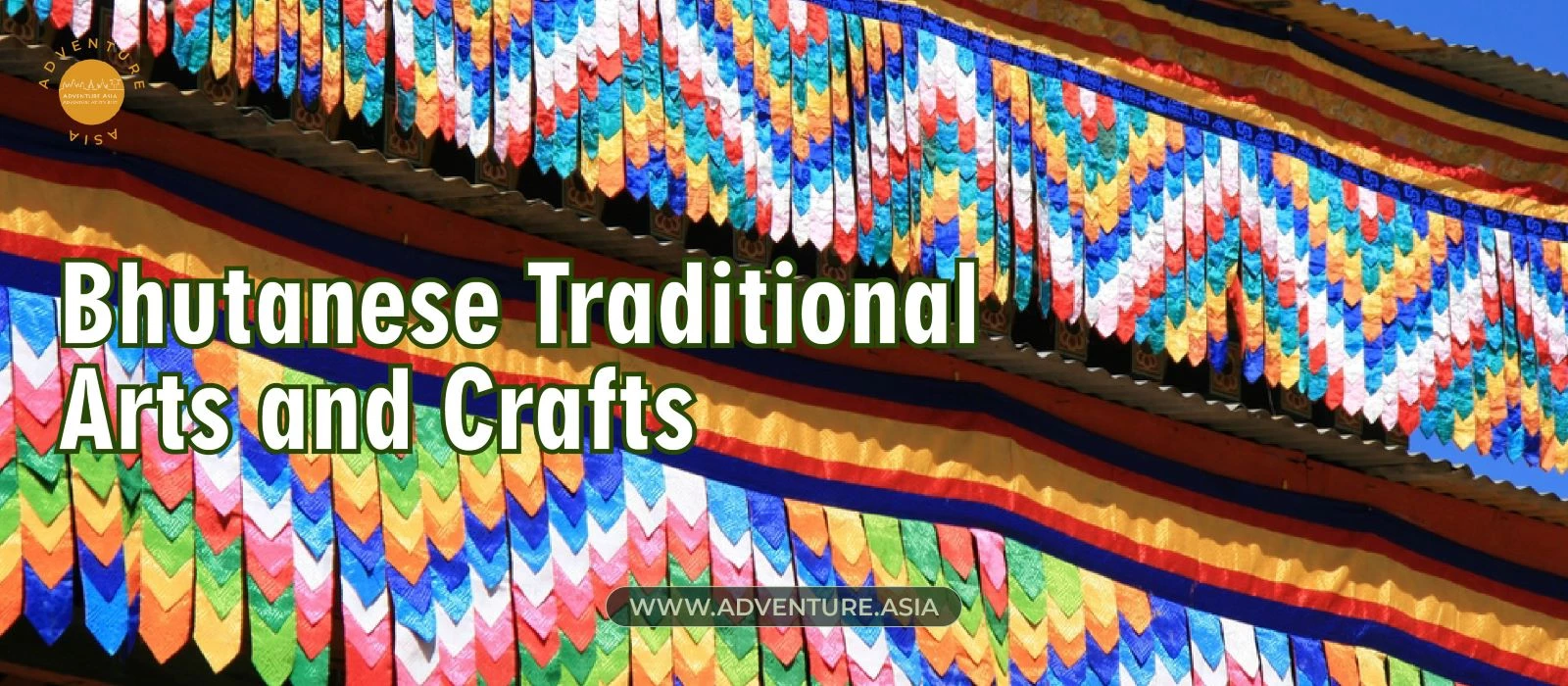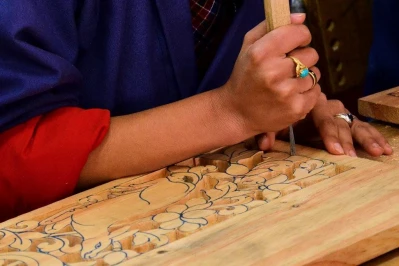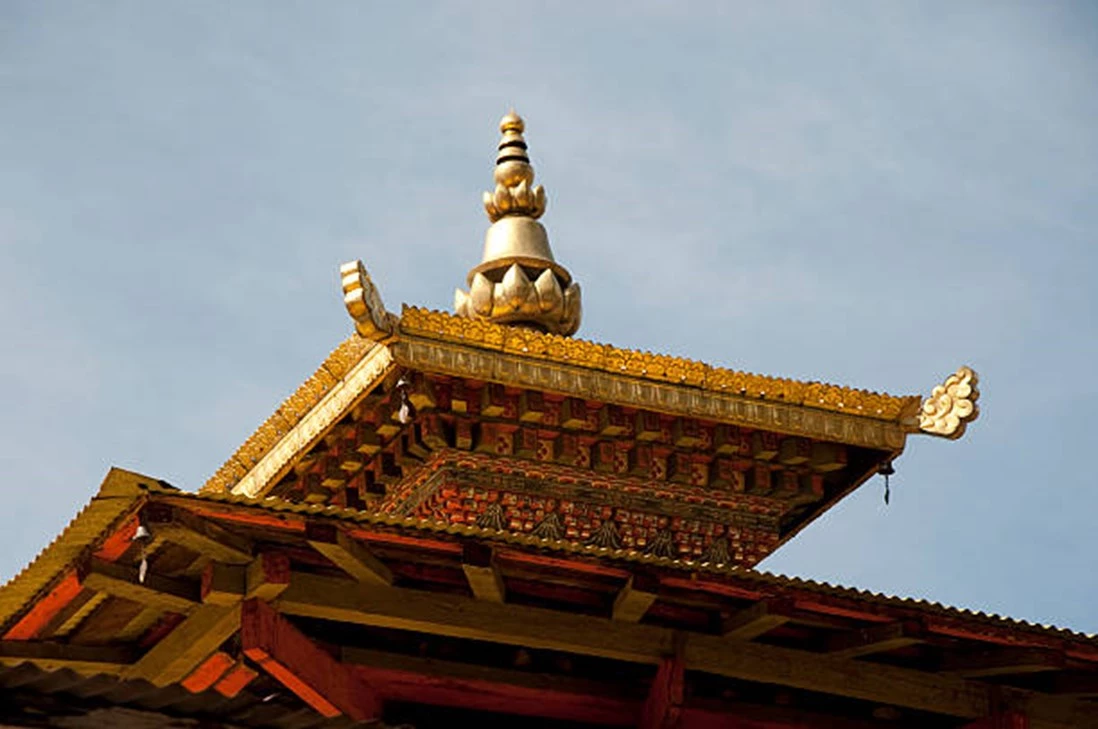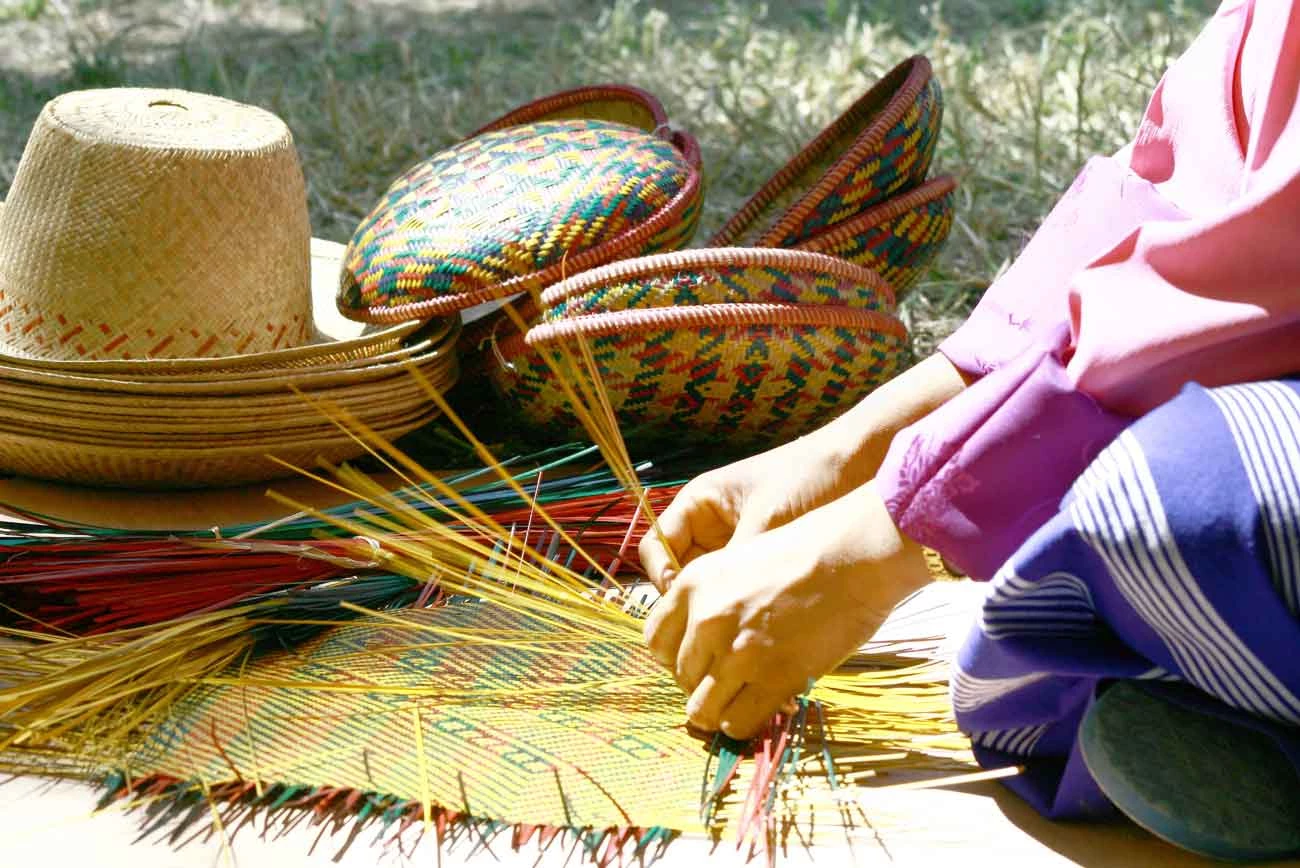
Zorig Chusum – The 13 Bhutanese Traditional Arts and Crafts
- 1. Carpentry (Shingzo)
- 2. Masonry (Dozo)
- 3. Carving (Parzo)
- 4. Painting (Lhazo)
- 5. Sculpting (Jinzo)
- 6. Bronze-casting (Lugzo)
- 7. Blacksmithing (Garzo)
- 8. Ornament-making (Troeko)
- 9. Cane and Bamboo Making (Tsharzo)
- 10. Weaving (Thagzo)
- 11. Tailoring, Embroidery, and Applique (Tshemzo)
- 12. Woodturning (Shagzo)
- 13. Paper-making (Deh-sho)
Nestled amidst the majestic Himalayas lies Bhutan, a kingdom where ancient traditions and breathtaking beauty intertwine. Beyond the stunning landscapes and vibrant culture, Bhutan boasts a captivating tapestry of 13 Bhutanese traditional arts and crafts (Zorig Chusum), each whispering stories of a rich heritage and embodying a timeless tradition. Buckle up, intrepid explorer, as we embark on a journey to unveil these artistic treasures, where every creation breathes life into Bhutan's soul.
1. Carpentry (Shingzo)
Imagine stepping into a serene Bhutanese monastery. Your gaze falls upon monumental wooden pillars, each meticulously carved, narrating a timeless tale.

Delicate door frames adorned with sacred motifs and majestic altars resonating with spirituality – Bhutanese carpentry, or Shingzo, exemplifies a profound connection between artistic expression and the divine. Skilled artisans, known as shinzops, utilize locally sourced wood like blue pine and walnut, renowned for their strength and beauty.
Using traditional tools and meticulous handwork, they breathe life into the wood, creating architectural marvels like dzongs (fortress monasteries) and temples. But Shingzo extends beyond grand structures. Everyday objects like intricately carved masks, furniture adorned with geometric patterns, and even the humble prayer wheels showcase the same dedication to detail and artistry.
2. Masonry (Dozo)
Bhutan landscape isn't just adorned with breathtaking mountains; it's also a source of inspiration for Dozo, the art of stonework. Skilled Dozo artisans utilize locally quarried stones like slate and granite to create architectural elements, sculptures, and even everyday utensils. Imagine witnessing the intricate stone carvings adorning the dzongs, showcasing religious symbols, mythical creatures, and floral patterns.
Dozo also manifests in the construction of sturdy stone houses, reflecting the deep connection Bhutanese people have with their environment.
3. Carving (Parzo)

Bhutanese traditional arts are steeped in spirituality, and Parzo, the art of carving, beautifully reflects this. Skilled Parzo artisans transform wood, stone, and even slate into captivating religious icons, prayer wheels, and masks used in vibrant Cham dances.

Imagine the intricate details on a wooden statue of a deity, the powerful expressions carved into masks depicting wrathful protectors, or the mantras meticulously carved onto a prayer wheel. Each piece serves as a tangible reminder of Bhutan's Buddhist faith and the importance of prayer and meditation in daily life.
4. Painting (Lhazo)
Bhutanese artistry extends beyond sculpting. Lhazo, the art of painting, brings vibrant colors and sacred narratives to life. Thangkas, the exquisite tapestry paintings depicting Buddhist deities, mandalas (symbolic representations of the cosmos), and scenes from Buddhist mythology, are a prime example of Lhazo.
The preparation process itself is imbued with ritual, with artists using natural pigments derived from minerals and plants to create a breathtaking color palette. The meticulous brushwork and application of gold leaf accents reflect the deep reverence artists hold for their craft. Lhazo also manifests in wall murals adorning monasteries and dzongs, depicting religious stories and serving as a source of inspiration for devotees.
>>>> Discover more: 10 Days Jambay Lhakhang Drup Festival Tour
5. Sculpting (Jinzo)
Bhutanese sculptures, or Jinzo creations, are not mere decorative pieces; they are powerful tools for meditation and prayer. Skilled Jinzo artisans breathe life into clay, wood, and bronze, crafting captivating sculptures of deities, mythical creatures, and historical figures. Imagine encountering a majestic bronze statue of the Buddha radiating serenity, or witnessing the intricate details on a clay sculpture depicting a wrathful protector. Each piece embodies centuries-old Buddhist iconography and serves as a focal point for devotion within monasteries and temples.
6. Bronze-casting (Lugzo)
While Debzo (mentioned earlier) encompasses a broader range of metals, Lugzo focuses specifically on the art of bronze-casting. Skilled Lugzo artisans utilize the lost-wax technique, where a wax model is created, encased in clay, and heated to melt away the wax. Molten bronze is then poured into the mold, creating a stunning bronze sculpture once cooled. Imagine the intricate details captured in a bronze statue, a testament to the skill and dedication of Lugzo artisans.

7. Blacksmithing (Garzo)
Adding functionality to the artistic realm, Garzo, the art of blacksmithing, plays a vital role in Bhutanese life. Skilled Garzo artisans transform iron into a variety of tools and implements – from sturdy agricultural tools and weapons to ornate locks and keys. Imagine the rhythmic clang of the hammer against the hot iron, shaping it into a tool that will be used for generations. Garzo creations are not just functional; they are a testament to the ingenuity and resourcefulness of the Bhutanese people.
8. Ornament-making (Troeko)
Bhutanese artistry extends beyond large-scale creations. Troeko, the art of ornament-making, adds intricate details to clothing, jewelry, and even religious artifacts. Skilled Troeko artisans utilize various techniques like hammering, repoussé (embossing metal from the reverse side), and filigree (creating delicate lace-like metalwork) to transform metals like silver, copper, and brass into dazzling adornments.
Imagine the delicate filigree work adorning a silver necklace, the intricate details on a silver prayer box, or the gleaming surface of a meticulously crafted belt buckle. Troeko creations are not just beautiful; they often hold cultural and religious significance, passed down as cherished heirlooms through generations.
9. Cane and Bamboo Making (Tsharzo)
Bhutan's abundant bamboo forests provide not just a scenic backdrop but also a source of inspiration for Tsharzo, the art of cane and bamboo work. Skilled Tsharzo artisans transform these fast-growing natural resources into a variety of functional and beautiful objects – from intricate baskets and mats to sturdy furniture and even delicate musical instruments like flutes.

Imagine the versatility of bamboo, woven into a sturdy basket for carrying everyday essentials or transformed into a delicate flute that fills the air with melodious music. Tsharzo reflects the Bhutanese people's respect for their environment and their ability to utilize natural resources in creative and sustainable ways.
10. Weaving (Thagzo)
The foundation of Bhutan national dress – the Gho for men and the Kira for women – lies in Thagzo, the art of weaving. Using traditional backstrap looms, skilled Thagzo artisans create stunning textiles that are not just aesthetically pleasing but also hold immense cultural significance.
Imagine a Kira adorned with intricate patterns of the endangered black-necked crane, a symbol of happiness in Bhutan, or a Gho woven with geometric designs inspired by the majestic Himalayan peaks. Thagzo is a living tapestry, weaving together threads of tradition, artistry, and cultural identity.
>>> Discover More: Bhutan Adventure Tour: Dive into the impressive Tshechu Festival
11. Tailoring, Embroidery, and Applique (Tshemzo)
Embellishing the foundation laid by Thagzo is Tshemzo, encompassing tailoring, embroidery, and appliqué. Skilled Tshemzo artisans meticulously tailor the woven fabric into garments, then add another layer of artistry with embroidery and appliqué techniques. Imagine the vibrant colors and intricate patterns adorning a Kira, or the auspicious symbols embroidered onto a ceremonial sash. Tshemzo isn't just decorative; it can also serve as a form of storytelling, depicting religious narratives or auspicious motifs.

12. Woodturning (Shagzo)
While Shingzo focuses on carpentry using larger pieces of wood, Shagzo, the art of woodturning, utilizes a lathe to create intricate and delicate objects from wood. Skilled Shagzo artisans transform wood into a variety of functional and beautiful creations – from bowls and cups to prayer beads and gaming pieces. Imagine the smooth, polished surface of a meticulously crafted wooden bowl, a testament to the skill and precision of Shagzo artisans.
13. Paper-making (Deh-sho)
Nestled amidst the lush valleys of Bhutan, skilled Deh-sho artisans transform a humble plant – Daphne bhutanica – into stunning sheets of paper. The process is an intricate dance between nature and human ingenuity. The bark is carefully peeled, boiled, and beaten into a pulp, then meticulously spread onto bamboo screens to dry.

The resulting paper, known as deysho, is renowned for its strength, durability, and beautiful texture. Imagine witnessing the delicate process of Deh-sho firsthand, the rhythmic pounding of the mallet against the bark, and the transformation of raw materials into a canvas for artistic expression. Deysho isn't just for writing; it serves as the foundation for intricate religious paintings and traditional bookbinding, further enriching Bhutan's cultural tapestry.
In conclusion, 13 Bhutanese traditional arts and crafts are a captivating invitation to delve deeper into this mystical kingdom. If you're an experienced adventurer seeking a unique expedition beyond the ordinary, look no further than Adventure Asia.
We craft soft and medium adventure experiences that unveil the soul of Bhutan, immersing you in its rich culture and breathtaking beauty. Contact us today to weave your own Bhutanese adventure!
- 1. Carpentry (Shingzo)
- 2. Masonry (Dozo)
- 3. Carving (Parzo)
- 4. Painting (Lhazo)
- 5. Sculpting (Jinzo)
- 6. Bronze-casting (Lugzo)
- 7. Blacksmithing (Garzo)
- 8. Ornament-making (Troeko)
- 9. Cane and Bamboo Making (Tsharzo)
- 10. Weaving (Thagzo)
- 11. Tailoring, Embroidery, and Applique (Tshemzo)
- 12. Woodturning (Shagzo)
- 13. Paper-making (Deh-sho)





















